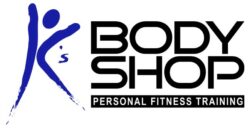Muscle Strength in Older Adults
Most fitness experts agree that maintaining muscle strength should be the number one concern for older adults. A decline in muscle strength affects people’s ability to do everyday activities such as getting in and out of a chair or bathtub, climbing stairs, getting in and out of a car, carrying laundry or groceries, picking up a grandchild, or even getting on and off the toilet.
Maintaining strength also plays a role for helping to reduce the risk of falls and fall related injuries. Since statistics show that muscle strength declines about 15% – 20% per decade after age 50 and people are living longer, building and maintaining muscle strength throughout one’s lifetime is critical to a person’s ability to remain living independently later in life.
Here are two basic assessments that are part of the Rikli-Jones senior fitness assessment that can be done anywhere for assessing muscle strength in older adults.
Chair Stand Test
The chair stand test is used to assess lower body strength in older adults and requires nothing more than a chair with a 17 in seat height and a stopwatch.
Place the back of the chair against a wall to prevent slipping. The client starts by sitting in the middle of the chair with good posture, feet flat on the floor, and arms crossed and held against the chest.
On the “go” signal, the client simply rises to a full stand, then returns to a fully seated position again.
The goal is to complete as many full stands with correct technique as possible in 30 seconds.
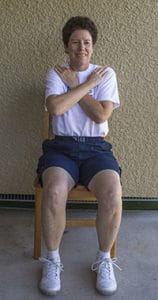
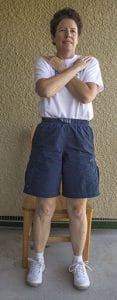
Some participants may not be able to complete even one stand without compensation, such as using their hands to push off their legs, using momentum, failing to stand all the way up, or failing to sit all the way down. These efforts are counted as “zero” for the purpose of comparison to standardized norms, but it’s important to document what the client CAN do so that you can measure progress when compared to future results.
The test is scored by the total number of stands correctly completed and is interpreted according to standardized norms based on age and gender. For example, the normal range for a 60 year old woman would be 12-17 stands in 30 seconds, normal for an 80 year old man would be 10-15. Eight or fewer stands is considered “at risk for loss of functional mobility” according to the Rikli-Jones assessment protocol.
Keep in mind that interpretation of these results are based on general performance guidelines and are not absolute predictors for loss of function. I tend to evaluate more than just the number of stands completed; I also note whether the client needs to stop and rest, if their pace starts to slow down, where they place their feet (base of support), and whether they have stable balance.
Arm Curl Test
The arm curl test is used to assess upper body strength in older adults and requires a stopwatch, a chair with no arms, a 5 lb dumb bell for women, and an 8 lb dumb bell for men.
Most people only test the dominant arm, but I usually test both if possible to evaluate symmetry and take the best score.
The client sits with good posture, both feet flat on the floor, with the testing side close to the edge of the seat. The weight is held down at the side with the elbow straight and the hand in a hammer (handshake) grip.
From the start position, the weight is curled up with the palm rotating to a face-up position at the end range of elbow flexion. The weight is then returned to the start position, back in the hammer grip.
Some participants may compensate by swinging their entire arm to lift the weight, not lift or lower through a full range of motion, or they may not be able to lift a weight that heavy. These efforts are scored as “zero” when comparing to standardized norms. Do the test with a lighter weight if necessary to document what they CAN do for the purposes of comparing these results to future scores. If the client is unable to hold the weight in their hand, a wrist weight can be used.
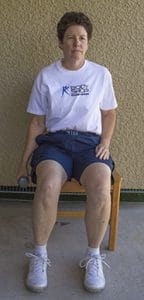
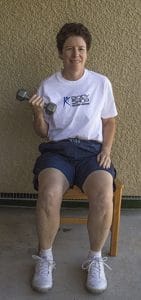
The test is scored by the number of curls completed with proper technique in 30 seconds. Eleven or fewer arm curls are considered “at risk for loss of functional mobility” according to the Rikli-Jones assessment protocol.
Keep in mind that interpretation of these results are based on general performance guidelines and are not absolute predictors for loss of function. I evaluate more than just the number of curls completed; I also compare right vs left if the client can use both arms, whether they need to stop and rest, if their pace starts to slow down, etc.
These are not the only tests that can be used to assess muscle strength in older adults, but they are easy to administer and have standardized norms for comparison. I specialize in improving strength in older adults, so If you’d like to know how you compare to your peers, contact me and we’ll do a full assessment to see where you’re at!
Rikli, R.E. & Jones, C.J. (2001). Senior Fitness Test Manual. Champaign, IL: Human Kinetics.
Want to get monthly fitness and nutrition tips delivered directly to your inbox? Access to early bird discounts and opportunities before the general public? Join now!
